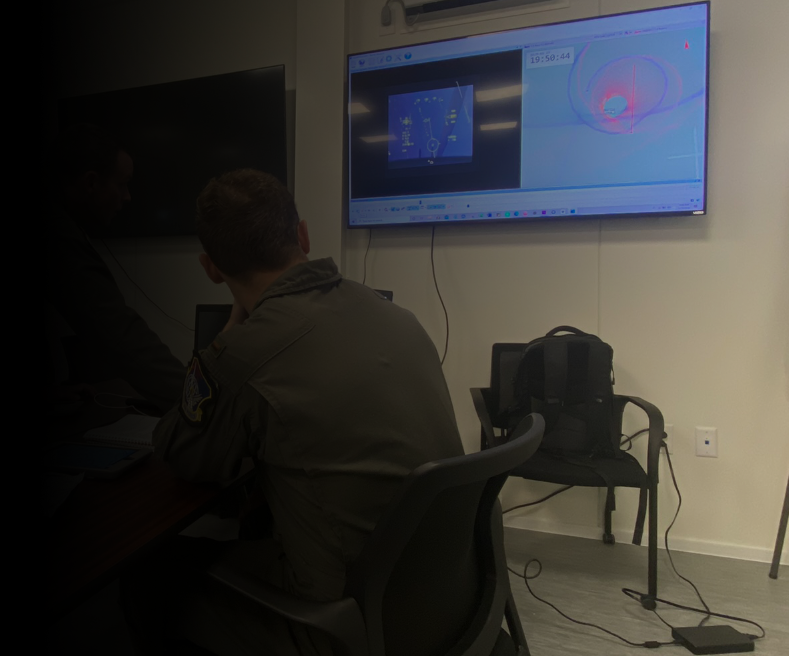Civilian-Military Integration
Harmonizing Training Standards While Preserving Institutional Excellence

Challenge
Civilian flight schools lacked the tools to produce Air Force-standard Aviation Training Jackets (ATJs) for students transitioning to military pipelines. This documentation gap created several significant challenges:
-
Documentation Incompatibility: While civilian schools excelled at training pilots, their documentation systems were not designed to capture the specific metrics and evaluations required by Air Force training standards.
-
Transition Friction: Students completing civilian training faced administrative hurdles when entering military pipelines due to inconsistent or incomplete training records that didn't align with Air Force requirements.
-
Evaluation Gaps: Military-specific maneuvers and competencies were often not explicitly documented in civilian training records, even when students had effectively mastered these skills.
-
Institutional Resistance: Civilian schools were understandably reluctant to overhaul their proven training methodologies and documentation systems solely to accommodate military requirements.
These challenges created unnecessary friction in what should have been a seamless pipeline between civilian training and military service, potentially delaying student progress and creating administrative burdens for both civilian schools and military training units.
Solution
We introduced specialized grading tools and ATJ automation that integrated with civilian schools' existing training methods, allowing them to log Air Force-specific maneuvers without changing their established practices. Our approach was designed to be minimally invasive while maximizing compatibility:
-
Adaptive Documentation System: We developed a flexible documentation layer that could translate civilian training assessments into Air Force-compatible formats without requiring instructors to learn new evaluation systems.
-
Parallel Record-Keeping: Our solution maintained civilian schools' native record-keeping while simultaneously generating Air Force-standard ATJs, ensuring both systems received appropriate documentation.
-
Maneuver Mapping: We created a comprehensive mapping between civilian training elements and their military equivalents, allowing automatic translation between the two systems without instructor intervention.
-
Seamless Implementation: The tools were designed to integrate into existing workflows with minimal training requirements, ensuring rapid adoption and consistent usage.
The key innovation in our approach was respecting the integrity and effectiveness of civilian training methodologies while creating a bridge to military documentation requirements. Rather than forcing civilian schools to adopt military practices, we built a solution that honored both systems and created a seamless connection between them.

Providing Proven Solutions
Grading Tools
Introduced specialized grading tools that integrate with civilian schools' existing training methods.
ATJ Automation
Developed automated ATJ generation system compatible with Air Force standards.
Seamless Integration
Enabled logging of Air Force-specific maneuvers while preserving civilian training practices.

Detailed Results
Seamless Student Transitions
Students entering military pipelines from civilian schools experienced smooth administrative transitions with complete, Air Force-compatible training records. This eliminated delays previously caused by documentation inconsistencies and ensured students could immediately build upon their civilian training.
Preserved Training Excellence
Civilian schools maintained the integrity of their proven training practices without compromise. Instructors continued to teach and evaluate using their established methodologies, with our system handling the translation to military standards behind the scenes.
Enhanced Confidence and Trust
Both civilian instructors and military leadership reported increased confidence in the training process. Comprehensive, standardized records provided clear visibility into student capabilities and training history, building trust between civilian and military training institutions.
Improved Training Continuity
Military instructors receiving students from civilian programs gained detailed insights into each student's prior training, allowing them to tailor subsequent instruction more effectively and avoid unnecessary repetition of mastered skills.
Expanded Training Opportunities
The success of this integration opened doors for more civilian schools to participate in military training pipelines, increasing capacity and diversity in the pilot training ecosystem.
Administrative Efficiency
The automation of ATJ generation eliminated hours of manual documentation work previously required to translate between civilian and military systems, freeing instructor time for more valuable training activities.
Summary
By creating a bridge between civilian and military training documentation without disrupting either system's core practices, we facilitated a true partnership between these two vital components of the pilot training ecosystem. The solution demonstrated that respecting institutional strengths while addressing specific integration challenges can yield results that benefit all stakeholders—civilian schools, military training units, and most importantly, the students transitioning between them.

Seamless Transition
Ensured smooth transitions for students entering military pipelines.
Practice Preservation
Maintained the integrity of civilian schools' proven training methods.

Record Standardization
Created comprehensive, standardized training records.

Confidence Building
Enhanced instructor and leadership confidence in the training process.
